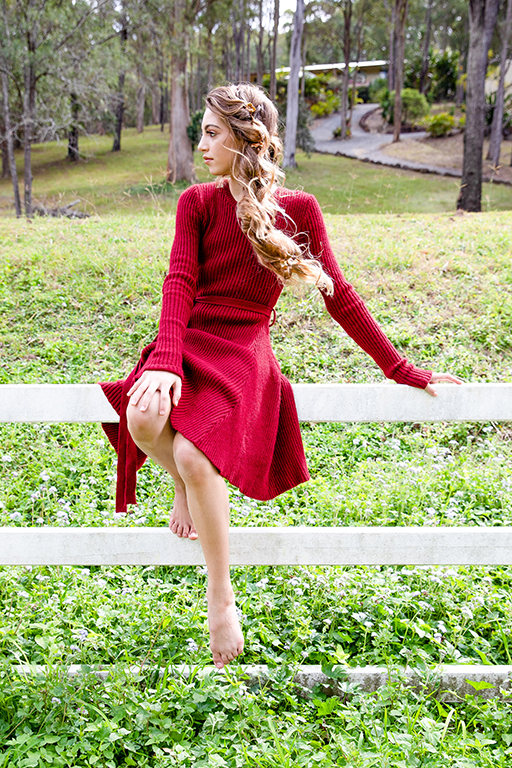The Newbie's Guide to Product Photography
If a picture is worth a thousand words, a magnificent product photo deserves a thousand website visits. Although I do not have data to back up that statement (yet), product photography can be very valuable to your ecommerce web site strategy.
To reach your target market participants that favor purchasing online, you additionally need to offer your audience clear, eye-catching photos of your products.
However product photography isn't as easy as aiming as well as firing. Also one http://waylonmfol062.e-monsite.com/pages/how-to-master-product-photography.html of the most basic products require the appropriate tools, illumination, as well as space to create beautiful photos that market shoppers right from the acquisition web page.
6 Product Photography Tips ( and also Examples) for Taking Pictures That Sell
Here are the pointers, examples, and materials you'll need to effectively photo as well as market your items in a manner that makes your site visitors as well as potential customers intend to transform.
1. Don't be afraid to use your smart device's cam.
This is the component where I'm meant to encourage you to purchase a high-end, 50-megapixel (MP) video camera with a 100-millimeter screw-on lens. Yet I'm not mosting likely to do that.
If you already have a electronic camera that fits this summary, capitalize on it. But for lots of kinds of items, it's completely acceptable to fire product pictures on a smart device.
Newer smart devices boast powerful electronic camera lenses as well as setups that permit you to maximize your shots for the various types of light and environments you might shoot in.
If you require a lot more convincing, simply take a look at Apple's Shot On An iPhone project as well as the pictures that have resulted from it over the years such as this set:
2. Fire from a tripod for photo consistency.
Before describing tripods, I'm bound to begin with a principal regulation: Don't prop your phone against something strong to aim your lens toward the topic.
It's just too easy for this makeshift arrangement to glide around throughout the shoot and create inconsistencies in your pictures' appearance. If you relax your cam on, state, a pile of books, simply make certain this plan doesn't change over the course of the shoot.
There's no injury in holding your video camera yourself when firing just a couple of product images for your ecommerce site. But as your organization grows, as well as you take more pictures of more items, it can be tough to systematize the product's orientation in each photo when firing handheld.
To make sure consistency throughout your products, you'll require a tripod. And also fortunately, getting one isn't constantly the Portrait Sessions big, industrial-sized investment it made use of to be.
Here are two sorts of tripods to think about.
Standard vs. Versatile
This is a practice tripod-- there are standard tripods offered for both video cameras as well as smart devices.
A flexible tripod can be controlled in a variety of ways. You can bend its legs as well as put it on different surfaces to get the angle you need.

Mobile Grasp
There's commonly a screw on the top of your tripod which affixes to your video camera to hold it in position. The underside of a lot of professional-grade electronic cameras has a screw opening just for this purpose, but smartphones can use the adhering to adapter:
The adapter grips the sides of your smartphone and also can screw into either type of tripod, permitting you to run the electronic camera manages with the phone display dealing with external and also toward you.

As soon as you figure out which install you'll require, establish it up in front of your product, and take into consideration putting 3 items of tape on the ground to mark where you want to maintain each leg of your tripod throughout the shoot.
3. Choose natural light or fabricated light.
Never ever ignore just how particular sorts of light can enhance (or prevent) your product photography. Bear in mind, customers get the very best consider an thing face to face, where they can see every little thing they require to prior to getting. The ideal lighting arrangement helps you reveal those essential decision-making product attributes when all website site visitors have to go on is a photo.
A solitary illumination setup could not help every product-- a lighting setup that helps some products could weaken the look of others.
There are two types of light you can pick as your major light source: natural and also man-made light.
Natural Light
Natural light refers to sunlight-- simple as that. It's likewise known as "soft light" because the sun casts a larger, softer range of light than, say, a light beaming straight on the product. Ecommerce product shots thrive in natural light if:
The product is shot outside or meant to be used outside.
The product is made use of by, endured, or shot with a individual ( individuals tend to look much better in natural light).You're attempting to emphasize the product's surroundings, as opposed to details qualities of the product.
Here's an instance of a shot making use of all-natural light:Man-made Light
Man-made light consists of candle lights, fire, and also much more typically, light bulbs. It's also referred to as " tough light" due to the fact that it produces a smaller sized however much more concentrated light surface area. This kind of light caters to products with physical details that require to be highlighted to excite an on-line shopper.
As a general policy, stay with just one kind of light per photo-- all-natural or artificial. Adding natural light to an unnaturally lit photo can soften a product that's suggested to festinate, and including fabricated light to a normally lit photo can develop a product that's suggested to look soft. You don't intend to enter your very own way.
4. Load or bounce your light to soften shadows.
Whether you make use of all-natural light or synthetic light, you'll require to lessen the shadows that any potential difficult light casts on the contrary end of a product.
There are three ways to do this:
Load Light
Include an additional, less-intense source of light to supplement your major light. This extra light is called your fill light and is utilized as a counterbalance to soften the natural darkness your major light produces behind an things.
To do this, position your fill light contrary your major light so your product rests between both source of lights.
Flashbulb Bounce Card
A bounce card, or reflector card, is a tiny card that " shows" or "bounces" the primary light back onto the surface area below your product to decrease darkness.
Some bounce cards affix to the flashbulb of a professional camera lens to diffuse the light from the cam's flash. This card sprays a softer light onto the topic from over your set-- as opposed to directly at it-- so you do not have lengthy darkness trail behind the things you're firing.
Standalone Bounce Card
If you're shooting from a smartphone, a flashbulb bounce card isn't an option, because you do not have a physical flash you can affix it to. Instead, make your own standalone bounce card placed opposite your primary light source.
For beginners to product photography, this bounce card can properly change your fill light, which counters the difficult light from the camera flash or lamp that's facing towards the front of your product.
5. Make use of a move or portrait mode to stress the product.
There isn't one appropriate method to position your product, lights, and also jump cards-- they can transform significantly depending upon your background. Yet don't choose a background based on what's simplest to produce. Backgrounds need to look like just how you desire your purchasers to regard your product when seeing it online.
Think about initially whether you 'd like a white history or a more vibrant, real-world history. There's an very easy means to attain each one.
White History: Sweep
For white backgrounds, it's not as basic as setting up a table against white drywall. Even smartphone cameras can grab little imperfections on a white wall surface that you wouldn't observe with the nude eye. To record a perfect white history without edges or acnes, make use of a move.
A sweep is a large bendable sheet of paper, whose bottom acts as the surface below your product and after that curves up into a white wall behind the product.
On video camera, the move's curve is unseen, emphasizing crucial product details as well as allowing the item to have every one of a internet site visitor's focus.
Real-World History: Picture Setting
Dynamic, real-world histories are very appealing when shooting products that have a certain use or are being designed by a individual-- as you saw aware of the briefcase earlier in this guide.
Yet, it's simple for a real-world background to swipe the focus of the photo, making it vague which item in the photo you're really marketing.
Provide your product depth and also focus with picture mode, a image setting on a lot of specialist cams, and also offered on numerous brand-new smartphones. This setting blurs the background so the context of the product is clear however not competing against the product itself.
Below is a extremely remarkable photo of a HubSpot pen absorbed picture setting on a Google Pixel 2 (I took this photo myself). You can tell the pen sits on a workdesk with a computer system behind it, yet the pen is still the prime focus for audiences:
6. Shoot a variety of pictures.
My last ecommerce photography suggestion to you is to not stop at one photo per product. Just as your customers look, hold, use, and also even try on goods in a shop, your internet site ought to shoot a variety of images to replicate this extremely experience.
If you're shooting garments, for instance, record the garment of apparel alone-- that is, expanded on a white surface area-- in addition to on a mannequin whose color contrasts the shade of the product.
Then, for additional images, have the apparel modeled on a person, allowing you to take images of the product from the individual's different postures and also angles.
Product Photography Set Up
Next, allow's summarize what we simply obtained-- below's a list of quick product photography set up suggestions that you can refer to as well as share on your team:
• Pick a cam-- whether or not that indicates using your smartphone.
• Get a tripod that works for your cam of choice.• Choose natural or artificial lighting-- consider which option is best for your product and also environment.
• Determine whether you'll load or jump light.• Select sweep or portrait mode.
• Take several different images to offer your viewers range.

Get Started With Your Product Photography
Don't really feel required to purchase every suggestion and also piece of equipment simultaneously. Apply these product photography pointers progressively to see what makes your store look the most presentable, and also transform your approach as your photography chops get better.